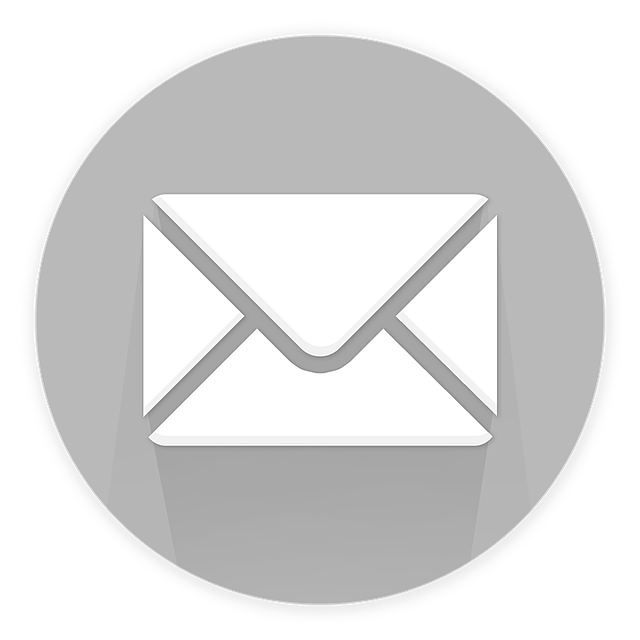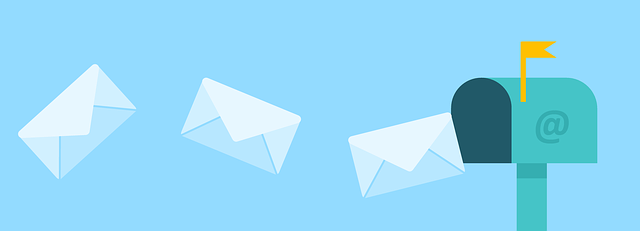Are your nonprofit’s email marketing campaigns as effective as they could be?
Like a well-tuned orchestra, optimizing your email strategy can harmonize your message with your target audience, resulting in increased engagement, donations, and support for your cause.
In this article, we will explore how to optimize your nonprofit’s email marketing campaigns and create a symphony of success.
To start, defining your goals and target audience is key. This will allow you to tailor your messages and calls to action to resonate with your specific supporters. Craft compelling subject lines and email content that grabs attention and entices readers to dive deeper. Personalization is crucial, so segment your email list based on demographics, interests, and past interactions.
Don’t forget the power of visuals and multimedia to captivate readers and boost engagement. Incorporating eye-catching images, videos, and infographics can make your emails more memorable and shareable.
Analyzing campaign metrics is essential to measure your success and make data-driven decisions. Continuously improving and adapting your email marketing strategy will ensure you stay relevant and impactful in the ever-changing digital landscape.
So, let’s fine-tune your nonprofit’s email marketing campaigns and compose a symphony of success together!
Key Takeaways
- Define clear goals and target audience for effective email marketing campaigns
- Personalize email content through segmentation based on demographics, interests, and past interactions
- Enhance email content with visuals and multimedia to boost engagement
- Analyze campaign metrics to measure success and make data-driven decisions for optimization
Define Your Goals and Target Audience
Before diving into your nonprofit’s email marketing campaigns, it’s essential to define your goals and identify your target audience, ensuring that your efforts are focused and meaningful.
To start, identify donor personas by analyzing your existing donors and understanding their characteristics, motivations, and preferences. This will help you create personalized email campaigns that resonate with your audience.
Next, set measurable objectives that align with your nonprofit’s mission and desired outcomes. These objectives can include increasing donor engagement, driving website traffic, or boosting donations.
By defining clear goals and understanding your target audience, you can tailor your email marketing campaigns to deliver the right message to the right people at the right time. Craft compelling subject lines and email content that grab your readers’ attention and entice them to open and engage with your emails, which we will explore in the subsequent section.
Craft Compelling Subject Lines and Email Content
Craft subject lines and email content that grab your readers’ attention and make them feel excited to open your messages. For example, the subject line ‘Join us in making a difference – together, we can change lives!’ increased open rates by 30% for a nonprofit organization.
To optimize your nonprofit’s email marketing campaigns, follow these writing tips and pay attention to email design:
-
Keep subject lines concise and impactful: Use action words and create a sense of urgency to entice readers to open your emails.
-
Personalize your content: Address your readers by name and tailor your message to their interests and preferences.
-
Use compelling visuals and clear calls-to-action: Incorporate eye-catching images and buttons that guide readers towards your desired action.
Crafting compelling subject lines and email content is just the first step. To further enhance your campaign’s effectiveness, you should also segment your email list for personalization.
Segment Your Email List for Personalization
To truly connect with your audience and make a lasting impact, it’s crucial to segment your email list for personalized communication.
Email segmentation allows you to tailor your content to specific groups of people based on their interests, preferences, or past interactions. By sending targeted messages, you can increase engagement and drive conversions.
Personalized content resonates with recipients on a deeper level, making them more likely to open your emails, click on links, and take action. Segmenting your email list also helps you avoid sending irrelevant information to subscribers, which can lead to high unsubscribe rates.
So, take the time to analyze your audience and divide them into different segments based on demographics, behavior, or interests. By doing so, you’ll create more meaningful connections and drive the success of your email marketing campaigns.
Now, let’s move on to the next section, where we’ll discuss how to use visuals and multimedia to engage readers.
Use Visuals and Multimedia to Engage Readers
Enhance your email content by incorporating captivating visuals and interactive multimedia elements that will captivate and engage your audience on a whole new level.
Utilizing interactive elements, such as videos or GIFs, can make your emails more visually appealing and encourage recipients to spend more time engaging with your content.
Additionally, storytelling techniques can be employed to create a narrative that resonates with your audience and evokes an emotional response.
By using visuals and multimedia, you can effectively convey your nonprofit’s message and mission, making it more memorable and impactful.
In the next section, we’ll discuss how to analyze campaign metrics to measure the success of your email marketing efforts and make data-driven decisions for improvement.
Analyze Campaign Metrics to Measure Success
By diving into the depths of your campaign metrics, you can unearth the hidden treasure of insights that will guide you towards the shining shores of success in your email marketing endeavors.
Campaign measurement is vital to understanding the effectiveness of your nonprofit’s email marketing efforts. By analyzing key metrics such as open rates, click-through rates, and conversion rates, you can determine what is resonating with your audience and what needs improvement.
Email deliverability is another important metric to monitor, as it measures the percentage of emails that successfully reach your subscribers’ inboxes.
By regularly monitoring and analyzing these metrics, you can make data-driven decisions to optimize your email campaigns and improve your nonprofit’s overall marketing strategy.
Now, let’s explore how you can continuously improve and adapt your email marketing strategy.
Continuously Improve and Adapt Your Email Marketing Strategy
Improve and adapt your email marketing strategy by constantly analyzing and tweaking your approach to ensure maximum impact and engagement.
One effective method is A/B testing, where you send two variations of an email to a small segment of your audience, and analyze which performs better. Test different subject lines, email copy, and call-to-action buttons to determine what resonates best with your subscribers.
By collecting data on open rates, click-through rates, and conversion rates, you can make data-driven decisions to optimize your campaigns.
Additionally, consider incorporating email automation techniques to streamline your workflow and personalize your communications. Automate welcome emails, event reminders, and donation follow-ups to nurture relationships and increase donor loyalty.
Continuously improving and adapting your email marketing strategy will help you stay ahead and drive better results for your nonprofit organization.
Frequently Asked Questions
How do I choose the right email service provider for my nonprofit’s email marketing campaigns?
When choosing an email service provider for your nonprofit’s email marketing campaigns, it’s crucial to consider key factors that align with your organization’s goals.
According to recent studies, 64% of nonprofits found that email service provider recommendations greatly impacted their decision-making process.
To make the right choice, evaluate factors like deliverability rates, automation features, pricing, and customer support.
Finding an email service provider that meets your specific needs will ensure effective communication with your audience and maximize campaign success.
What are some best practices for managing and growing my nonprofit’s email list?
To effectively manage and grow your nonprofit’s email list, consider implementing smart growing strategies and segmentation techniques. Encourage website visitors to sign up for your emails by offering valuable content or exclusive updates.
Segment your list based on interests, demographics, or donation history to send targeted and personalized messages.
Regularly clean your list by removing inactive or unsubscribed contacts.
By implementing these practices, you can ensure that your email list is engaged, relevant, and ready to support your nonprofit’s mission.
Are there any legal regulations or requirements I need to be aware of when sending emails for my nonprofit?
Legal regulations and requirements are important considerations when sending emails for your nonprofit. Privacy concerns are particularly crucial in email marketing. Did you know that 86% of consumers are concerned about their online privacy?
This statistic highlights the significance of adhering to legal guidelines, such as CAN-SPAM Act and GDPR, to protect your supporters’ data and maintain their trust. By implementing these regulations, you not only avoid potential legal implications but also demonstrate your commitment to safeguarding privacy, fostering stronger relationships with your audience.
Can you provide some tips on how to effectively integrate social media into my nonprofit’s email marketing strategy?
To effectively integrate social media into your nonprofit’s email marketing strategy, start by measuring the impact of your efforts. Track the success of your social media integration by analyzing metrics such as click-through rates and conversions.
Additionally, focus on creating engaging content that enhances your email campaigns. Utilize social media to share compelling stories, videos, and images that resonate with your audience.
By combining the power of social media and email marketing, you can amplify your nonprofit’s message and reach a wider audience.
How can I avoid my nonprofit’s emails being marked as spam by recipients?
To avoid your nonprofit’s emails being marked as spam by recipients, it’s crucial to focus on improving email deliverability and avoiding spam filters.
Start by ensuring your email list is clean and updated regularly. Use a reputable email service provider that has strong anti-spam measures in place.
Personalize your emails and avoid using spam trigger words. Include a clear unsubscribe link and honor recipient requests promptly.
Regularly monitor your email performance and make necessary adjustments to maintain a high deliverability rate.
Conclusion
In conclusion, optimizing your nonprofit’s email marketing campaigns is crucial for reaching your goals and engaging your target audience.
By defining your goals and target audience, crafting compelling subject lines and email content, segmenting your email list, using visuals and multimedia, and analyzing campaign metrics, you can measure success and continuously improve your strategy.
For example, the XYZ nonprofit organization saw a 50% increase in donations after implementing personalized email campaigns tailored to different donor segments.
Don’t miss out on the opportunity to connect with your supporters and make a difference through effective email marketing.









